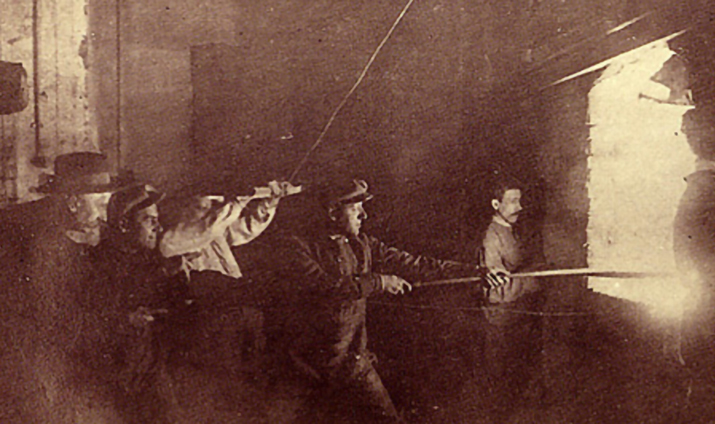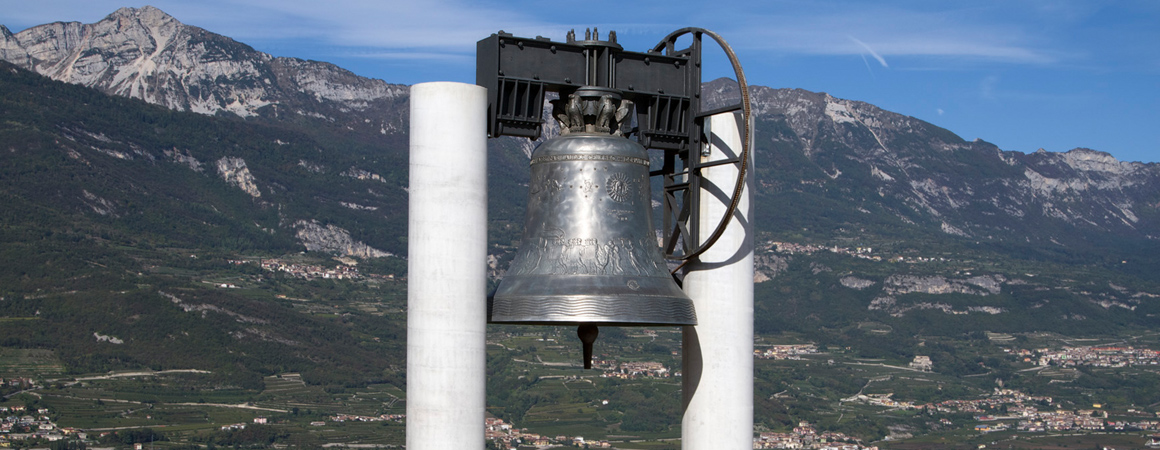Once the Bell was cast, it was placed on the castle’s tower, which seemed destined to be its permanent home. 4 October 1925 was the date set for the first chiming. The guests included Victor Emmanuel III, who asked to postpone the engagement. "I set the date in honour of St Francis, the Saint of universal brotherhood, I would rather forgo it than compromise this highly significant date,” Don Rossaro replied to Prefect Guadagnini, who had made the request on behalf of the sovereign. The king was disappointed, but honoured his word. At the first toll, Vittorio Emanuele stiffened in a military salute, and General Pecori Giraldi turned to Minister Celesia, requesting that Don Rossaro be awarded the rank of Commander in recognition of his service. But the priest was not pleased: 'Frankly, the sound was not good,' he wrote in his diary, 'with each toll my heart shuddered, as if pierced by a poisoned blade. Not one joy in my life was spared from poison. Even this had to be tainted. Calm yet troubled, downcast yet resolute, I stood there while everyone applauded, thinking: ‘I will recast it.’”
The first Bell was destroyed. But preparations were already underway to cast the second one. On 12 October 1938, a large crowd assembled at Luigi Cavadini’s foundry in Verona. Stefano Zuech was tasked with creating the exterior bronze decoration. However, this time there was no applause, because the molten metal poured into the mould exerted such intense pressure that it tore it apart. It took almost a year before another attempt could be made. The new casting was poured on 13 June 1939. Quicker than the first, it took six minutes and thirty-five seconds to complete. The test run had still to be performed, successfully taking place the following August, while its creator was already engrossed in planning the celebration of its first toll.
Certainly, inaugurating a Bell commemorating the fallen of the First World War while the Second World War was about to begin could not have been easy. That monument to Peace, over 16,200 kilograms in weight, standing 3 metres high, with a diameter of 3 metres and a six-quintal clapper, was intended to “battle” symbolically against too many armies.
Hitler's Germany had already invaded Poland when Don Rossaro decided to involve the embassies of all the countries that had participated in the casting of the first Bell, asking them to send an ampoule with the waters of their country's most significant rivers, which would then be used for the 'baptism' of the new symbol of Peace.
Behind that initiative lay both hope and a resolve that the priest courageously conveyed to foreign ambassadors in a letter written in his characteristic style—rhetorical, yet unmistakably clear: “Even above the murky clouds that obscure the sky, the stars continue to shine; likewise, above and beyond the storm that troubles our horizon, the ‘ideal’ endures supreme”. And it is precisely for this reason that I am honoured to participate with Your Excellency as the monumental Bell of the Fallen -recently recast using cannons from nearly all the nations of the World War-has been marvellously completed.” Yet his vision extended even further, foreseeing the need to promote dialogue at the close of a war that had only just begun: “For the moment, the fate of humanity remains uncertain, and consequently, the programme for the grand inauguration celebrations has been temporarily suspended. The glorious Bell of the Fallen, a monument to genuine Peace and human brotherhood, which belongs to all the nations of yesterday’s war, will remain unwavering in its Charter, regardless of the fate of the peoples emerging from this dark storm. Rest assured, this majestic Bell will perpetually celebrate the glorious Heroes of the Great Nation you so nobly embody”. Don Rossaro passed away on 4 January 1952. Rovereto, by his initiative, had been filled with statues, plaques, busts. Characters and episodes that were not to be forgotten. Yet while it had all begun within that territory, the idea of the Bell projected the city and its people far beyond the limits of the municipality.

A scene from the casting of the Bell






